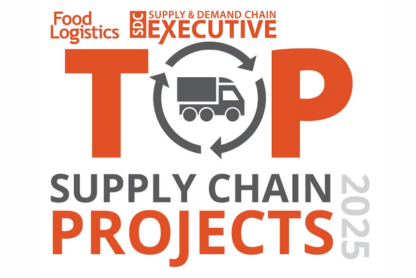As we step into 2024, the world of supply chain management for discrete manufacturers is poised for significant transformation. Global disruptions, technological advancements, and shifting priorities are reshaping the supply chain landscape. Supply chain leaders face both challenges and opportunities that require strategic foresight and agile solutions. Let's explore the 4 key trends we believe will define the supply chain space this year.
1. Embracing digital supply chain transformation
In 2024, digitalizing supply chains has shifted from a competitive edge to an industry standard. Leaders leverage automation, business intelligence, and advanced analytics for robust master data management. This digital shift empowers organizations to build resilience and achieve operational efficiency. Leaders must ensure teams have accurate information for smarter inventory decisions, and hesitancy to embrace digital transformation often results in missed efficiency gains and cost savings, putting companies at a clear disadvantage.
Eric Blanton, MSA Safety Global Purchasing Manager, notes the necessity of adapting to new environments: “Consignment programs that used to be effective just don’t work in this environment and we’ve had to learn to adapt and make changes. It was apparent that if we continued to use certain legacy processes, our inventory visibility would become static in this new environment and that would present a new set of challenges.”
2. Addressing labor shortages, rising inflation, and sustainable practices
Sustainability will take the spotlight in 2024, responding to consumer expectations and ESG regulations. Across virtually all industries, the commitment to sustainability extends from product design to disposal. The journey towards a resilient, socially and environmentally conscious supply chain involves strategic investments, talent retention, supplier collaboration, and comprehensive ESG reporting. Neglecting sustainable practices jeopardizes brand integrity and long-term viability. Labor shortages and inflation remain critical risks, but modern supply chain solutions continue to help navigate disruptions, minimize delays, ensure customer satisfaction, and reduce costs and waste.
Vatsal Gandhi, Executive Director of Global Supply Chain at Modine Manufacturing Company, emphasizes flexibility to address these challenges: “Flexibility in exception management is about stabilizing plans and optimizing inventory to enhance adaptability to unforeseen disruptions.” Read 5 ways to strengthen supply chain efficiency and build business resilience.
3. Fostering Collaborative Networks
Supply chain resilience requires a strong collaborative ecosystem, bringing internal teams and suppliers together for increased visibility. Fostering alignment across buyers, planners, and suppliers breaks down silos, reducing inefficiencies and costs. In a world where inadequate collaboration leads to errors, delays, and shortages, organizations continue turning to solutions that synchronize internal teams and suppliers through centralized platforms.
“It’s difficult to notice or remember supply chain fluctuations on an individual level, but when you shift your reliance to a trusted platform, you become more aware of these trends and can act on them faster and better,” as recognized by Mandeep Sahota, Vice President of Operations at Johnson Controls. With this in mind, Johnson Controls has built a digital thread to connect 14 Sites and 800+ Global Suppliers.
4. Bridging the Gap Between Planning and Execution with AI
The increasing pressure for resilience and ESG compliance challenges supply chain planning. New market dynamics and heightened customer requirements emphasize the necessity for applications that bridge the gap between planning and execution. While current sales and operational planning (S&OP) solutions excel at predicting scenarios and opportunities to add to gross margin in stable market conditions, they lack a robust approach to response planning when sudden changes occur. AI-enhanced response planning capabilities boost performance and efficiency by offering a swift action plan, prioritized by positive impact on top and bottom lines, for pivoting execution in response to sudden changes.
Jim Cocca, VP of Supply Chain Execution at Spirit AeroSystems, has embraced the power of response planning as a strategic advantage. “Exceptional execution in the supply chain is critical to Spirit’s long-term success. Empowering procurement teams to make better daily decisions and standardizing their work across manufacturing sites will further our ability to meet and exceed customer expectations now and in the future.”
In the complex landscape of 2024, organizations can find reliable partners and solutions that offer a pathway to increased visibility, reduced operational costs, and improved overall supply chain resilience. As you navigate the challenges and embrace the opportunities of the New Year, intelligent supply chain execution solutions can help you achieve your supply chain goals.
Discover how LeanDNA can transform your supply chain in 2024. Contact us for a personalized platform demo.






